While not directly about the camera, this is one in a series of posts that relates to the Nikon Z6. You should be able to find all the posts about that camera in the Category List on the right sidebar, below the Articles widget. There’s a drop-down menu there that you can use to get to all the posts in this series; just look for “Nikon Z6/7”. This is also relevant to the Fuji GFX 100; for other posts about that camera, look at Category “GFX 100”. This is also a continuation of testing that I’ve been doing on the Epson P800 printer. I’ve created a category called “Printers”, and put this post in that category. If you go to the Category List (on the right in the desktop formatting), find “Printers” and click on it, you’ll see all the posts in that series.
In the previous two posts, we looked at the results of resizing files from three different camera/lens combinations:
- Fujifilm GFX 100, Fuji 110 mm f/2 lens, set to f/5.6. That’s not the sharpest aperture for that lens, but the sharpness is not far down from its best there. Lightroom sharpening amount = 20, radius = 1, detail = 0. Image height is 8776 pixels and image area is 101 megapixels.
- Nikon Z6, FX mode, Zeiss Otus 85 mm f/1.4 lens, set to f/4. That’s not the sharpest aperture for that lens, but the sharpness is not far down from its best there. Lightroom sharpening amount = 30, radius = 1, detail = 0. The increase sharpening is to compensate for the (weak) AA filter on the Z6. Image height is 4000 pixels and image area is 24 megapixels.
- Nikon Z6, DX mode, Zeiss Otus 55 mm f/1.4 lens, set to f/2.8. That’s pretty close to the sharpest aperture for that lens. Lightroom sharpening amount = 30, radius = 1, detail = 0. The increase sharpening is to compensate for the (weak) AA filter on the Z6. Image height is 2780 pixels and image area is a bit less than 12 megapixels.
If you haven’t already done so, please at least skim the earlier posts. Here’s the first one. Here’s the second one.
We’ve looked at at resizing the full frame and APS-C images to the size of the GFX 100 one using Lightroom export and a smarter resizing program: On1 Resize. Now I’ll show you results with Topaz Gigapixel AI, using the default settings.
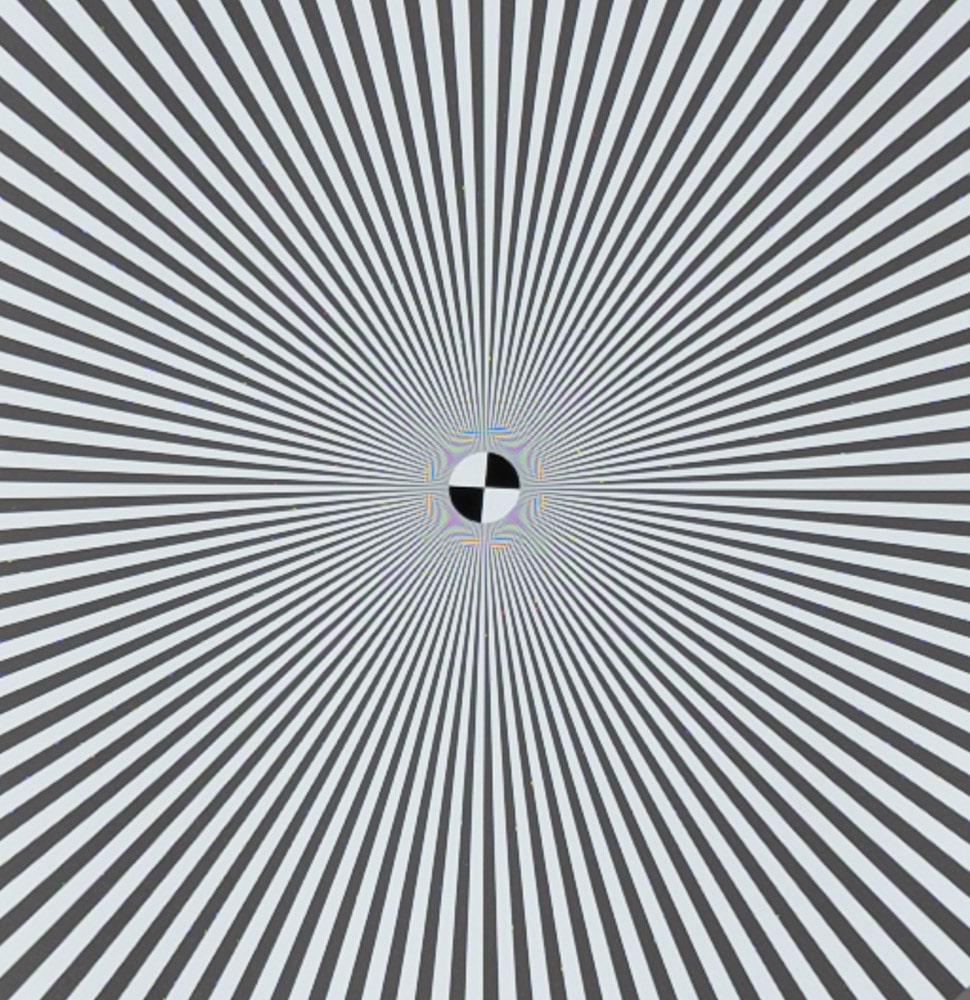
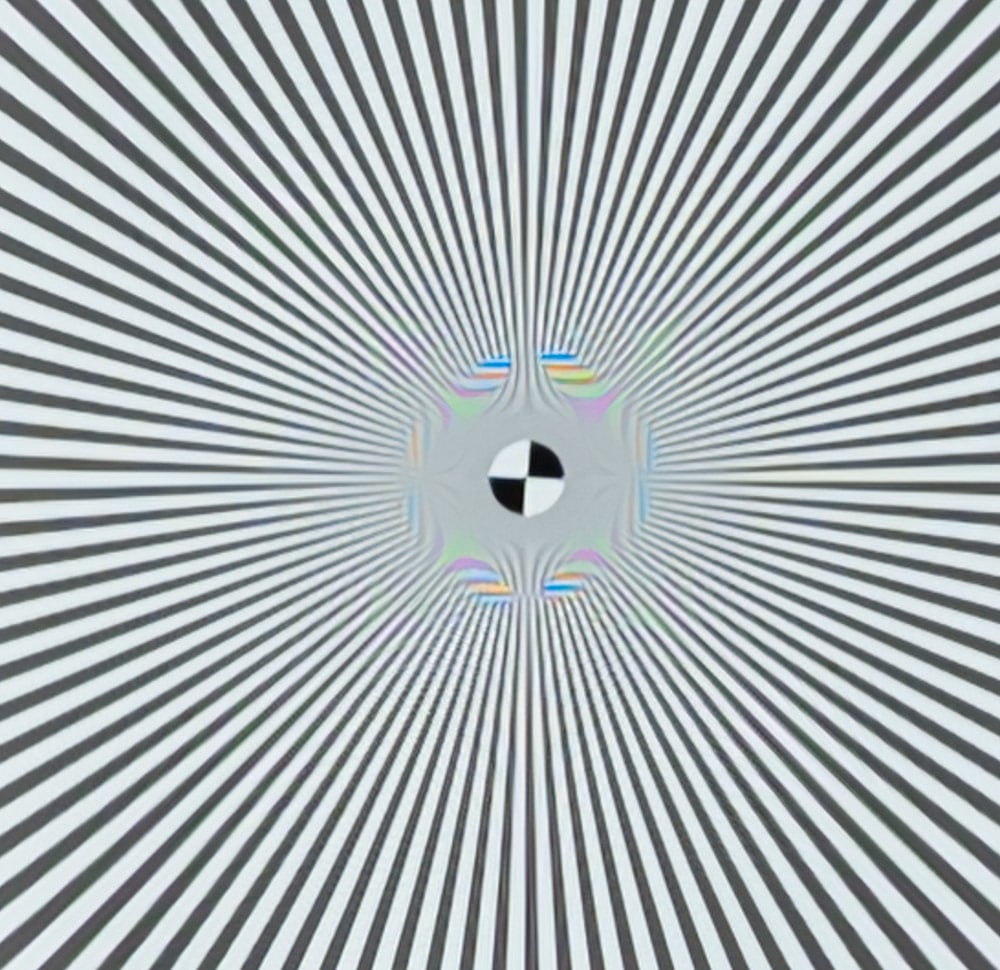

There are some obvious artifacts in the last one, but I doubt that they’d be visible unless you got up close and personal with a 40-inch high print. Remember, these crops are 1/17 of the height of the print.
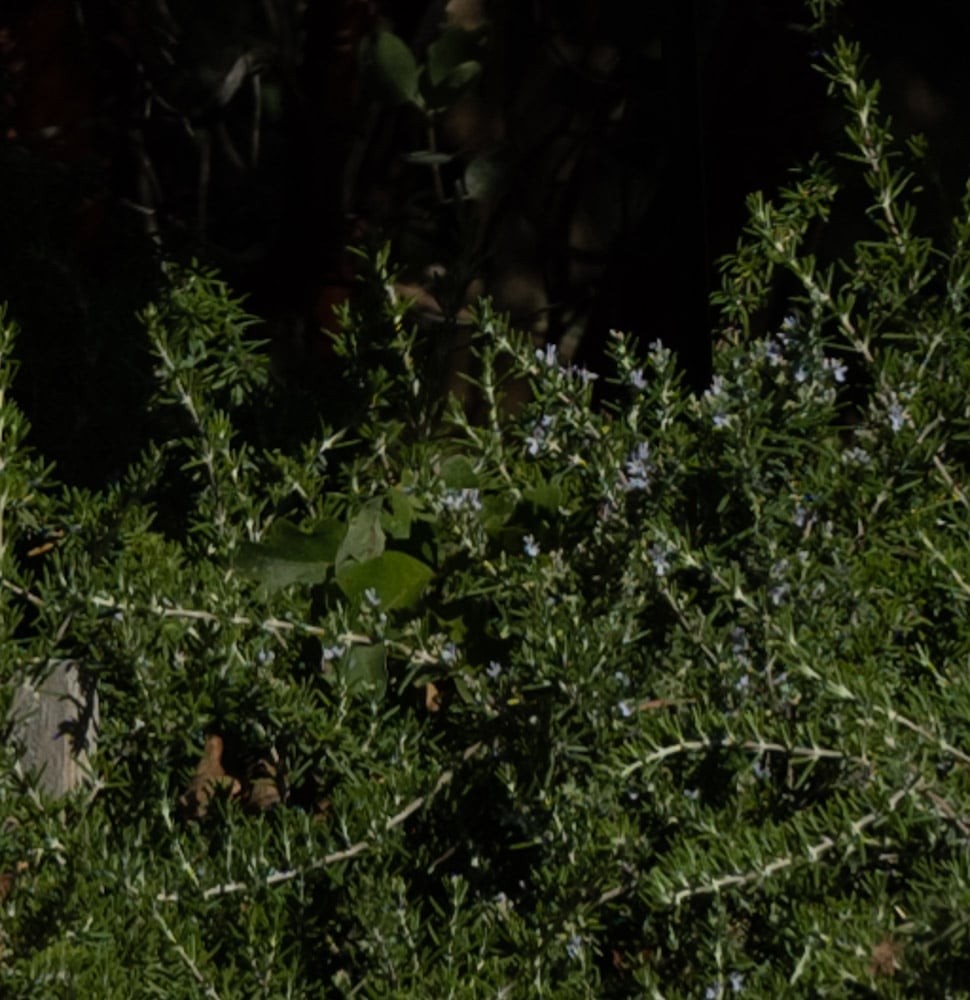
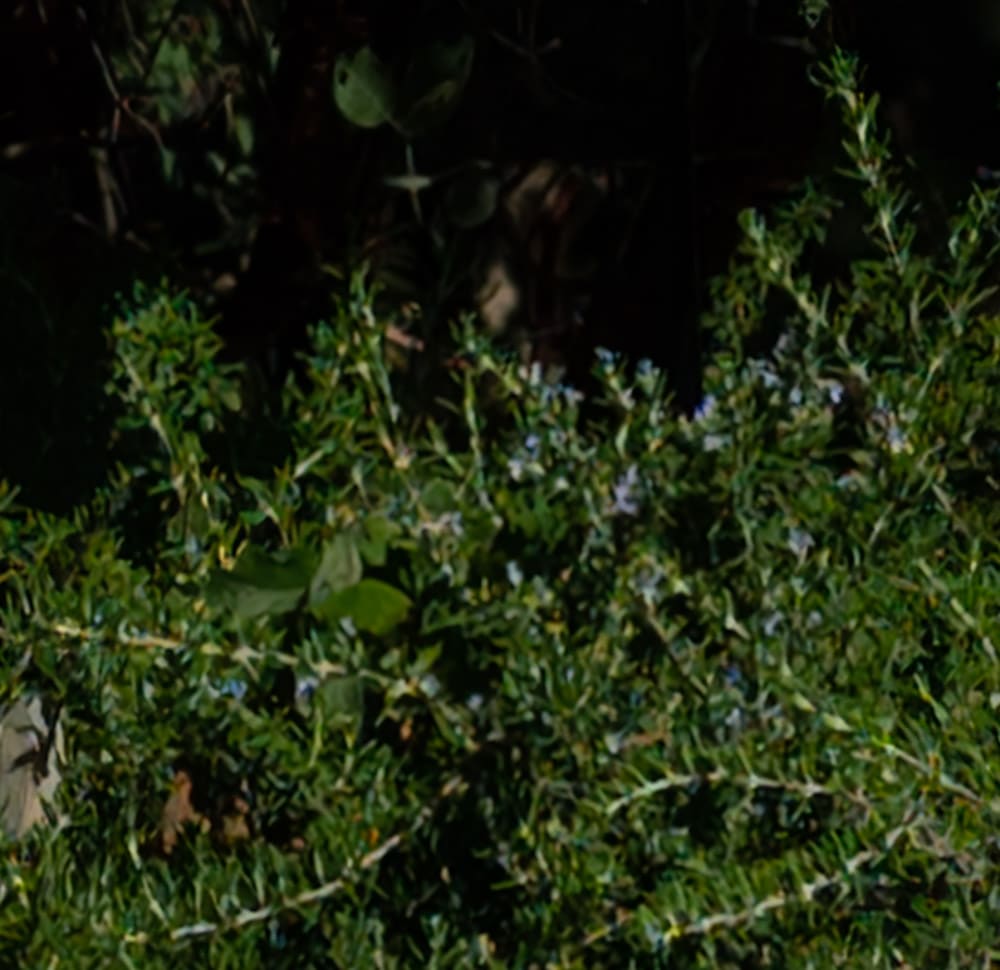
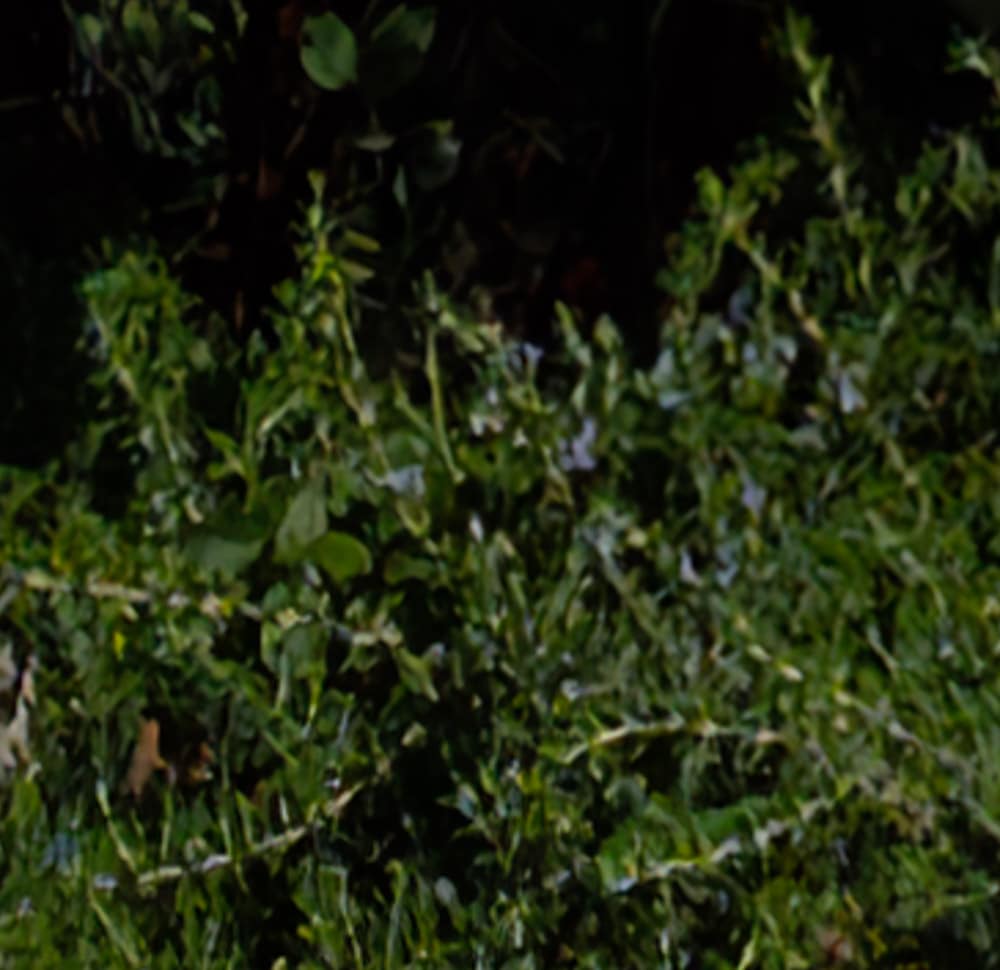
I find these more credible than the ON1 images in the previous post.
One more set of crops:
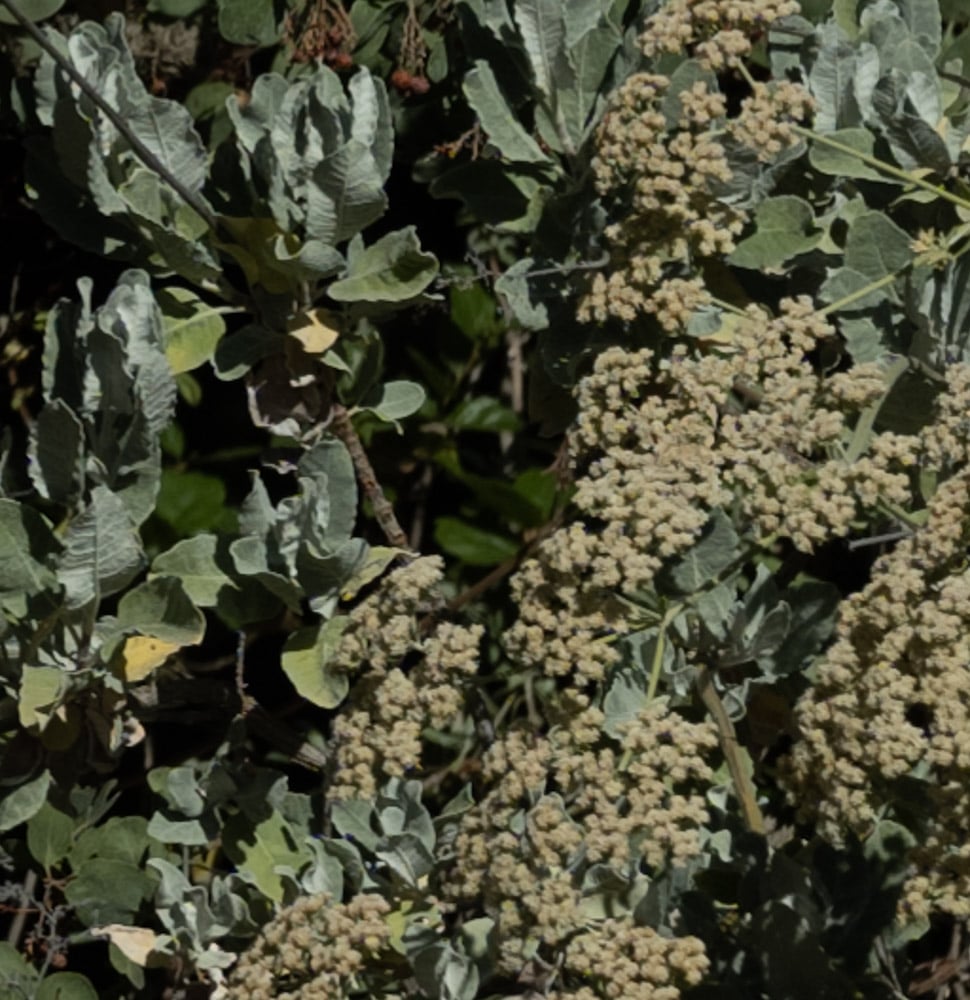
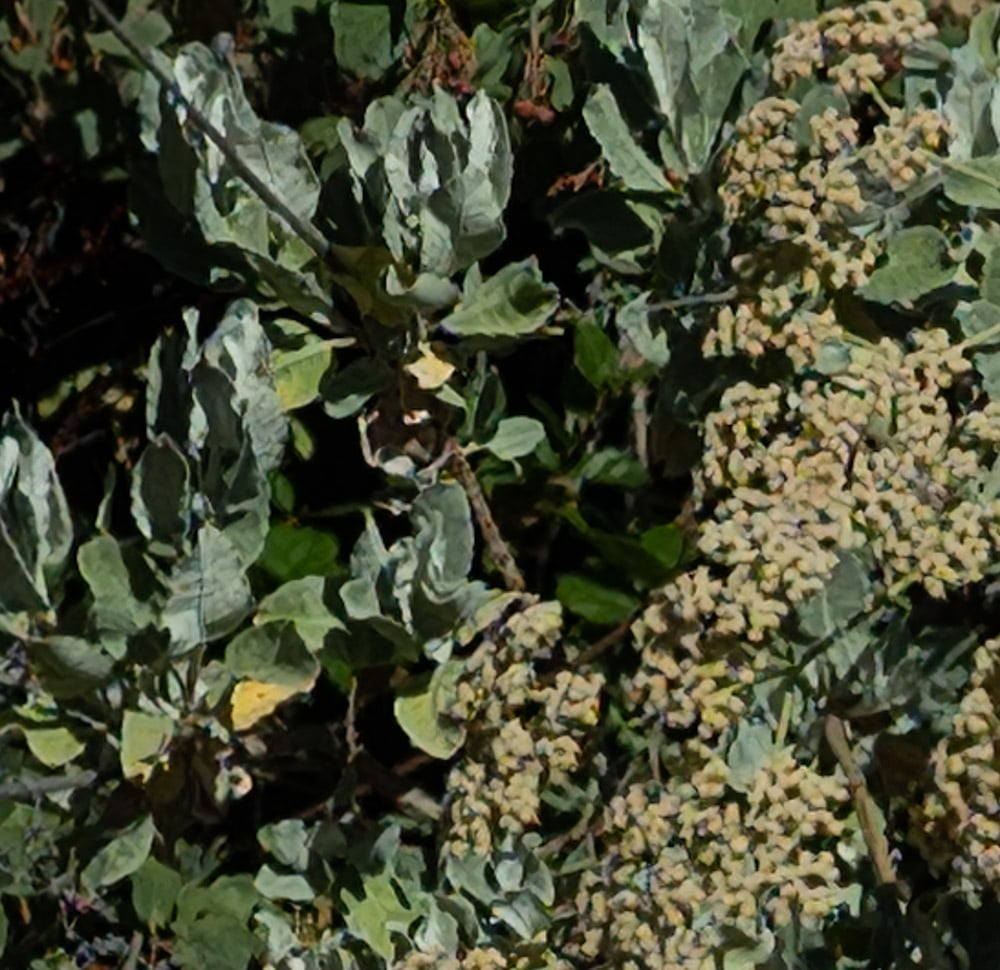

This is fairly impressive. They won’t stand close inspection next to the real 100 MP images, but they’re not bad at all.
I next printed some crops at the scale of 40-inch-high prints. Here’s the viewing distance where I stopped seeing a difference from the GFX 100 image:
- Siemens Star, FF: 8-10 feet
- Siemens Star, APS-C: 15-20 feet
- Green foliage, FF: 5 feet
- Green foliage, APS-C: 9 feet
- Beige flowers, FF: 6 feet (ignoring the overbright highlights on the left)
- Beige flowers, APS-C: 11 feet (ignoring the overbright highlights on the left)
By the way, my vision is 20/20 (20/15 on a good day) in my left eye, and 20/25 in my right eye. If your vision is better, your distances may be further. If your vision is worse, your distances may be closer.
Testing note: I found none of the instability that made using ON1 resize an unpleasant experience. Upsizing the files wasn’t very swift, but neither is making a 40-inch-high print. Gigapixel AI does most of the work with the GPU:
Try version 3.1.1 if you need to take a close look.
Version 4 are better only when you look at it in distence.
Interesting test with interesting results, Jim
Thanks for the time and effort.
It will also be fun to see how you view the printable characteristics of your a7RVI when it arrives and how it matches up to the Fuji and under what circumstances.